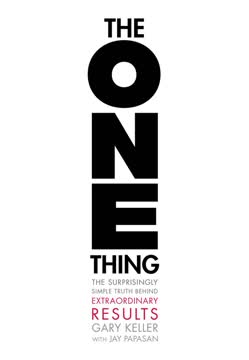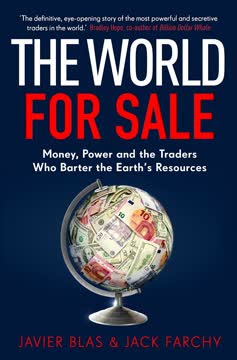النقاط الرئيسية
1. صعود روكفلر من بدايات متواضعة إلى عملاق النفط
"كل قرش جمعه روكفلر طوال حياته كان من كدّ يده وجهده الخاص."
بدايات متواضعة. جاء جون د. روكفلر من خلفية صعبة، حيث كان والده محتالًا ولم يرث شيئًا. ورغم ذلك، طور منذ صغره أخلاقيات عمل قوية وفطنة مالية عالية. بدأ حياته المهنية ككاتب حسابات ثم انتقل سريعًا إلى تجارة المنتجات الزراعية خلال الحرب الأهلية.
الدخول إلى صناعة النفط. أدرك روكفلر إمكانات صناعة النفط الناشئة في ستينيات القرن التاسع عشر. استثمر في أول مصفاة له، "إكسلسيور ووركس" في كليفلاند بولاية أوهايو. ميزته حاسة تجارية حادة وقدرة على انتقاء الفرص التي جعلته يتفوق على معاصريه.
التوسع السريع. من خلال مزيج من الشراكات الاستراتيجية، والاستحواذات، وعمليات فعالة، وسّع روكفلر أعماله النفطية بسرعة. وبحلول عام 1870، أسس شركة ستاندرد أويل التي أصبحت القوة المهيمنة في صناعة النفط الأمريكية لعقود طويلة.
2. العقلية الاستراتيجية والفطنة التجارية وراء نجاح ستاندرد أويل
"كنت دائمًا أحاول تحويل كل كارثة إلى فرصة."
التكامل الرأسي. اتبع روكفلر استراتيجية التكامل الرأسي، حيث سيطر على جميع جوانب صناعة النفط من الإنتاج إلى التوزيع، شاملة:
- آبار النفط وعمليات الحفر
- المصافي ومرافق المعالجة
- شبكات الأنابيب للنقل
- مرافق التخزين وعربات النقل
- عمليات التوزيع والتجزئة
الكفاءة وتقليل التكاليف. كان روكفلر مهووسًا بالكفاءة وخفض التكاليف. نفذ العديد من الابتكارات مثل:
- توحيد العمليات عبر المصافي
- شراء المواد بكميات كبيرة بأسعار مخفضة
- تطوير المنتجات الثانوية من نفايات تكرير النفط
- تحسينات مستمرة في تقنيات التكرير
الشراكات الاستراتيجية. أقام تحالفات مع شركات السكك الحديدية ولاعبين رئيسيين آخرين في الصناعة، غالبًا ما يحصل من خلالها على أسعار تفضيلية وصفقات مميزة منحت ستاندرد أويل ميزة تنافسية على المنافسين الأصغر.
3. ممارسات احتكارية وتكتيكات قاسية في صناعة النفط
"تكتيكات روكفلر لوضع شركته في مقدمة اللعبة كانت سبب نجاحها، لكنها أيضًا جعلته وشركته مكروهين بشدة من قبل الشعب الأمريكي."
الاستحواذات العدوانية. اشترى روكفلر منافسيه بشكل منهجي أو أجبرهم على الخروج باستخدام تكتيكات حازمة مثل:
- بيع المنتجات بأسعار أقل من المنافسين لإخراجهم من السوق
- الاستحواذ على الموردين الرئيسيين لقطع موارد المنافسين
- استخدام الضغوط الاقتصادية لإجبار الشركات الصغيرة على البيع
صفقات السكك الحديدية. حصلت ستاندرد أويل على خصومات سرية وأسعار تفضيلية من شركات السكك الحديدية، مما منحها ميزة تكلفة كبيرة على المنافسين. وكانت هذه الممارسة، المعروفة بمخطط شركة التحسين الجنوبي، مثار جدل واسع.
التأثير السياسي. استخدم روكفلر ثروته المتزايدة ونفوذه للتأثير على السياسيين والمنظمين لصالحه، شاملة:
- الضغط من أجل تشريعات مواتية
- اتهامات بالرشوة للمسؤولين
- مقاومة قوانين مكافحة الاحتكار
4. الحياة الأسرية والقيم الشخصية تشكل شخصية روكفلر
"كان روكفلر رجلاً شخصيًا للغاية، يفضل عدم الحديث عن أعماله."
القناعة الدينية. كان روكفلر مؤمنًا متدينًا على مدار حياته، حيث أثرت إيمانه في ممارساته التجارية وعاداته الشخصية وجهوده الخيرية لاحقًا. امتنع عن شرب الكحول وآمن بقيمة العمل الجاد والتقشف.
التنشئة الأسرية. رغم علاقته الصعبة مع والده، تأثر روكفلر بشدة بتقوى وقوة والدته. سعى لبناء حياة أسرية مستقرة لأطفاله، مع التركيز على:
- التعليم والقيم الأخلاقية
- التواضع والاعتدال في الإنفاق
- أهمية رد الجميل للمجتمع
توازن العمل والحياة. رغم تركيزه الشديد على الأعمال، كان يقدر وقته الشخصي، مستمتعًا بـ:
- ركوب الدراجات والأنشطة الخارجية مع عائلته
- البستنة وتقدير الطبيعة
- التأمل الهادئ والصلاة
5. الصراعات مع المنافسين وتنظيمات الحكومة
"لفهم عمق نجاحه حقًا، يجب وضعه في سياقه وتخيل كيف كان حال البلاد وبقية العالم بعد الحرب الأهلية مباشرة."
المنافسات الصناعية. واجه روكفلر تحديات عديدة من المنافسين مثل:
- صراعات مع منتجي النفط في بنسلفانيا
- نزاعات مع مصافي وأنابيب منافسة
- المناورات الاستراتيجية ضد عمالقة الصناعة الآخرين مثل أندرو كارنيجي
التدقيق الحكومي. مع تزايد هيمنة ستاندرد أويل، واجهت الشركة تنظيمات حكومية متزايدة:
- قانون شيرمان لمكافحة الاحتكار عام 1890 استهدف ممارسات الاحتكار
- تحقيقات على مستوى الولايات في ممارسات الشركة
- أمر المحكمة العليا بتفكيك ستاندرد أويل عام 1911
القدرة على التكيف والصمود. رغم هذه التحديات، أظهر روكفلر وستاندرد أويل قدرة ملحوظة على التكيف:
- إعادة هيكلة الشركة للامتثال للتنظيمات مع الحفاظ على السيطرة
- التنويع في صناعات وأسواق دولية جديدة
- استغلال العلاقات السياسية لتخفيف تأثير التنظيمات
6. الصورة العامة وجهود إصلاح السمعة
"كرّس جون الابن حياته لإصلاح اسم العائلة، محاولًا تصحيح الأضرار التي سببتها إيدا تاربل وكل من انتقد ستاندرد أويل ووالده."
الصورة العامة السلبية. تعرض روكفلر وستاندرد أويل لانتقادات حادة من:
- صحفيين استقصائيين مثل إيدا تاربل
- نشطاء العمال والسياسيين الشعبويين
- المنافسين وأصحاب الأعمال الصغيرة الذين أُخرجوا من السوق
جهود العلاقات العامة. لمواجهة هذه الصورة السلبية، شارك روكفلر في عدة جهود للعلاقات العامة مثل:
- توزيع النقود الصغيرة على الناس كلفتة حسن نية
- إنتاج أفلام وظهور علني لتلطيف صورته
- التأكيد على أعماله الخيرية والتبرعات
الاستراتيجية طويلة الأمد. تولى ابنه جون د. روكفلر جونيور مهمة إعادة تأهيل اسم العائلة من خلال:
- مشاريع خيرية واسعة وأعمال عامة
- دعم الفنون والمؤسسات الثقافية
- تبني ممارسات تجارية أكثر شفافية
7. العمل الخيري والإرث الدائم لإمبراطورية روكفلر
"يجب أن يكون العطاء مدخلاً له بنفس طريقة الاستثمار. العطاء هو استثمار."
العطاء الاستراتيجي. تعامل روكفلر مع العمل الخيري بنفس العقلية الاستراتيجية التي اتبعها في الأعمال:
- التركيز على جذور المشكلات الاجتماعية بدلاً من أعراضها
- تأسيس مؤسسات مثل جامعة شيكاغو ومؤسسة روكفلر
- دعم الأبحاث الطبية ومبادرات الصحة العامة
حجم التأثير. كان نطاق عمله الخيري غير مسبوق:
- تبرعات تجاوزت 500 مليون دولار (مليارات بالدولار الحالي)
- دعم التعليم والبحث العلمي والصحة العامة على مستوى العالم
- تأثير كبير في تطوير العمل الخيري الحديث
التأثير المستمر. لا يزال إرث روكفلر يشكل مجالات متعددة:
- شركات خلف ستاندرد أويل مثل إكسون موبيل تظل رائدة في الصناعة
- مؤسسة روكفلر مستمرة كقوة رئيسية في العمل الخيري العالمي
- أفراد العائلة لهم تأثير في السياسة والبنوك والمؤسسات الثقافية
آخر تحديث::
FAQ
1. What’s "John D. Rockefeller - The Original Titan" by J.R. MacGregor about?
- Comprehensive Rockefeller Biography: The book provides a detailed account of John D. Rockefeller’s life, from his humble beginnings to becoming the richest man in American history.
- Business and Personal Life: It explores both his business strategies, especially the rise of Standard Oil, and his personal values, family life, and religious convictions.
- Historical Context: The narrative situates Rockefeller’s achievements within the broader context of 19th and early 20th-century America, including the Civil War, industrialization, and the rise of monopolies.
- Legacy and Impact: The book examines Rockefeller’s influence on the oil industry, American capitalism, philanthropy, and the shaping of modern business practices.
2. Why should I read "John D. Rockefeller - The Original Titan" by J.R. MacGregor?
- Learn from a Titan: The book offers insights into the mindset, strategies, and perseverance of one of history’s most successful entrepreneurs.
- Balanced Perspective: It presents both the criticisms and the achievements of Rockefeller, allowing readers to form a nuanced view of his legacy.
- Business Lessons: Readers can extract practical lessons on negotiation, efficiency, risk-taking, and strategic thinking applicable to modern business.
- Historical Relevance: Understanding Rockefeller’s story helps contextualize the development of American industry, philanthropy, and the regulatory environment.
3. What are the key takeaways from "John D. Rockefeller - The Original Titan"?
- Perseverance and Thrift: Rockefeller’s rise was rooted in relentless hard work, frugality, and a refusal to accept the status quo.
- Strategic Expansion: He mastered the art of acquisition, negotiation, and leveraging competition to build Standard Oil into a global powerhouse.
- Ethics and Controversy: The book discusses the blurred lines between aggressive business tactics and unethical behavior, inviting readers to consider the complexities of business ethics.
- Philanthropy and Legacy: Rockefeller’s later years were marked by significant charitable contributions, notably the founding of the University of Chicago, and efforts to repair his public image.
4. How did John D. Rockefeller’s early life and family background shape his character and ambitions, according to J.R. MacGregor?
- Difficult Childhood: Raised in poverty with a con-man father and a strong, pious mother, Rockefeller learned the value of thrift, hard work, and self-reliance.
- Early Business Instincts: Even as a child, he showed entrepreneurial tendencies, selling candy and raising turkeys for profit.
- Moral Foundation: His mother’s religious influence instilled in him a sense of duty, discipline, and a drive to avoid waste and indulgence.
- Motivation for Independence: The instability and lack of support from his father fueled Rockefeller’s determination to achieve financial security and autonomy.
5. What were the main strategies and business methods Rockefeller used to build Standard Oil, as described in "The Original Titan"?
- Aggressive Acquisitions: Rockefeller expanded by acquiring competitors, often through a mix of negotiation, persuasion, and, when necessary, coercion.
- Efficiency and Cost-Cutting: He relentlessly pursued efficiency, from negotiating lower transportation rates to minimizing waste in production.
- Strategic Partnerships: Rockefeller valued collaboration and delegated responsibilities, building a team of experts to manage different aspects of the business.
- Market Control: He used tactics like the South Improvement Company deal to secure favorable rates and outcompete rivals, leading to near-monopoly status.
6. How does "John D. Rockefeller - The Original Titan" address the controversies and criticisms surrounding Rockefeller and Standard Oil?
- Accusations of Ruthlessness: The book details how Rockefeller was accused of unscrupulous and monopolistic practices, both by competitors and journalists like Ida Tarbell.
- Legal and Public Backlash: It covers the government’s antitrust actions, culminating in the 1911 breakup of Standard Oil, and the public’s perception of Rockefeller as a “greedy monster.”
- Rockefeller’s Perspective: The narrative presents Rockefeller’s own justifications, emphasizing his belief in efficiency, progress, and the greater good.
- Nuanced View: MacGregor encourages readers to consider the context of the era and the fine line between innovation and exploitation.
7. What role did Rockefeller’s religious beliefs and personal values play in his business and philanthropy, according to J.R. MacGregor?
- Pious Upbringing: Rockefeller’s strict Baptist faith influenced his personal conduct, work ethic, and aversion to alcohol and excess.
- Moral Justification: He saw his business success as aligned with divine providence and believed in using his wealth for the greater good.
- Philanthropic Vision: His giving was strategic, aiming to solve systemic problems rather than provide short-term relief, as seen in his support for education and public health.
- Family and Discipline: Rockefeller’s values shaped his family life, raising his children with simplicity and strong moral guidance despite their wealth.
8. How did Rockefeller’s actions influence the development of the oil industry and global business, as explained in "The Original Titan"?
- Industry Transformation: Rockefeller’s consolidation of refineries and creation of Standard Oil set the template for modern corporate structure and vertical integration.
- Global Impact: His dominance prompted the formation of international competitors like Royal Dutch Shell, reshaping the global oil market.
- Innovation in Logistics: He revolutionized oil transportation with pipelines, tankers, and strategic deals with railroads.
- Legacy Companies: The breakup of Standard Oil led to the creation of major oil companies (Exxon, Mobil, Chevron, etc.) that still dominate the industry today.
9. What were the major challenges and turning points in Rockefeller’s career, as highlighted by J.R. MacGregor?
- Early Hardships: Overcoming poverty, family instability, and initial business setbacks.
- Civil War Profiteering: Leveraging the war economy to build capital and reputation.
- The Cleveland Massacre: The aggressive acquisition of Cleveland refineries marked a decisive shift toward monopoly.
- Antitrust Breakup: The 1911 dissolution of Standard Oil was both a legal defeat and a financial windfall, as Rockefeller’s wealth increased through diversified holdings.
10. How does "John D. Rockefeller - The Original Titan" portray Rockefeller’s approach to philanthropy and his lasting legacy?
- Strategic Giving: Rockefeller treated philanthropy like investment, focusing on long-term solutions and institutional support (e.g., University of Chicago).
- Reluctance and Control: He disliked being pressured for donations and preferred to give on his own terms, often through trusted advisors.
- Image Rehabilitation: Later in life, he made public gestures (like giving out dimes) to soften his public image and counteract negative press.
- Enduring Influence: His philanthropic model influenced future generations, and his descendants continued his legacy in public service and charity.
11. What are the most important concepts and business lessons from "John D. Rockefeller - The Original Titan" by J.R. MacGregor?
- Efficiency as a Virtue: Rockefeller’s obsession with eliminating waste and maximizing productivity was central to his success.
- Calculated Risk-Taking: He was willing to borrow and invest aggressively when he saw long-term potential, even in volatile industries.
- Reputation and Credit: Maintaining integrity and reliability was crucial for securing loans and partnerships.
- Adaptability: Rockefeller pivoted from kerosene to gasoline as markets changed, showing the importance of flexibility in business strategy.
12. What are the best quotes from "John D. Rockefeller - The Original Titan" and what do they mean?
- “If your only goal is to become rich, you will never achieve it.” – Emphasizes that true success is about purpose and accomplishment, not just wealth accumulation.
- “I always tried to turn every disaster into an opportunity.” – Reflects Rockefeller’s resilience and ability to find advantage in adversity.
- “Don’t be afraid to give up the good to acquire the great.” – Encourages risk-taking and ambition beyond comfort zones.
- “Giving should be entered into in just the same way as investing. Giving is investing.” – Shows his belief in strategic, impactful philanthropy.
- “I would rather earn 1% off a 100 people's efforts than 100% of my own efforts.” – Highlights the power of delegation, teamwork, and leveraging others’ skills for greater success.
مراجعات
تتفاوت آراء القراء حول كتاب "جون د. روكفلر - العملاق الأصلي"، حيث حصل على تقييم متوسط بلغ 3.82 من 5. ينتقد بعض المراجعين أسلوب الكتابة الضعيف، والأخطاء النحوية، والانحياز الظاهر في الطرح. في المقابل، يشيد آخرون بالكتاب لكونه غنيًا بالمعلومات، وسهل القراءة، ويعد مدخلاً جيدًا للتعرف على حياة روكفلر. يقدر بعض القراء النظرة المتعاطفة التي يقدمها المؤلف تجاه روكفلر، بينما يرى آخرون أنها دفاعية بشكل مبالغ فيه. يوصف الكتاب بأنه مناسب لمستوى طلاب المرحلة الإعدادية، لكنه يظل مفيدًا ومثريًا للبالغين أيضًا. ويوصي بعض المراجعين باستخدامه في المدارس كنقطة انطلاق للدراسة المتعمقة.
Similar Books












